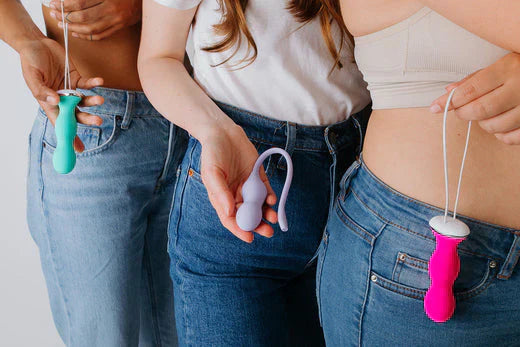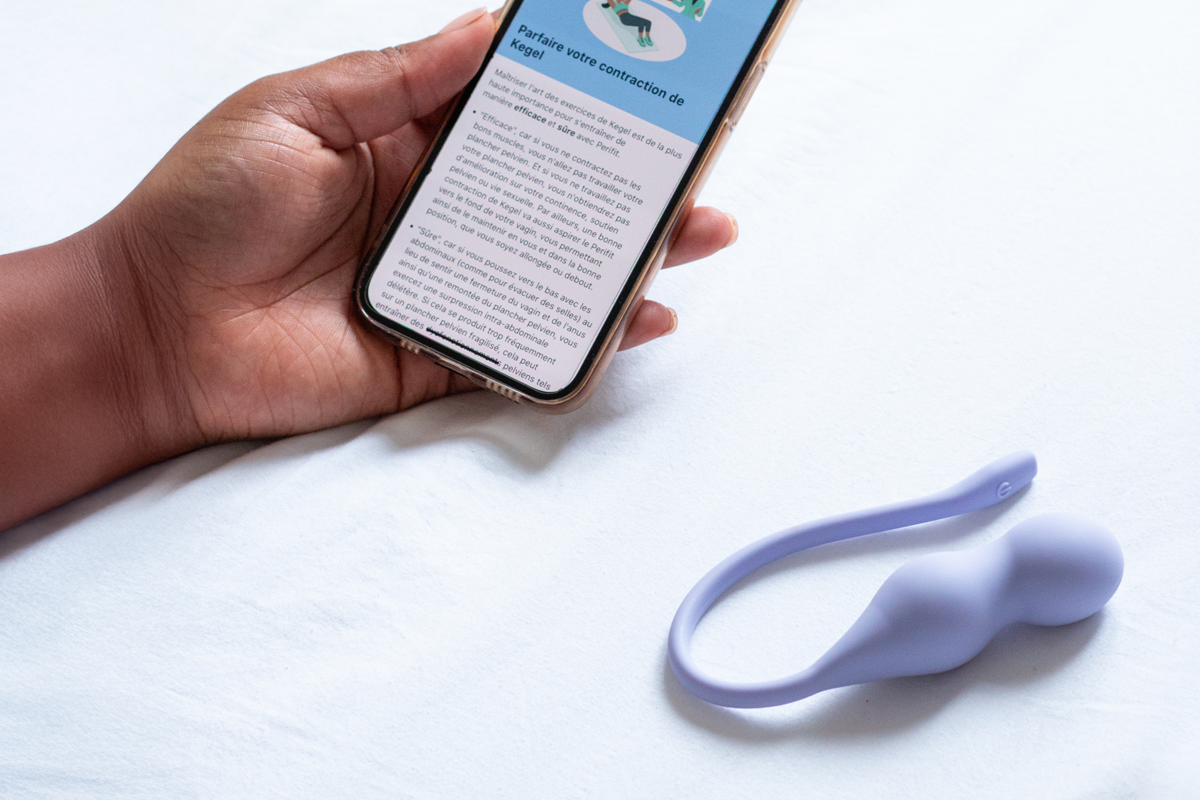Ever felt like your pelvic floor muscles could use a little boost? Pelvic floor biofeedback might just be the secret weapon you've been looking for. This innovative technique helps you understand and strengthen those hidden muscles that play a crucial role in your health and well-being. Whether you're dealing with urinary issues or just want to improve your overall pelvic strength, biofeedback offers a personalized approach to getting your muscles in top shape. Ready to discover how this game-changing therapy works and why it's creating such a buzz? Let's explore the world of pelvic floor biofeedback together!
What is biofeedback for the pelvic floor?
Understanding the basics
Pelvic floor biofeedback is a specialized technique that helps individuals gain awareness and control over their pelvic floor muscles. This innovative therapy uses electronic monitoring devices to provide real-time feedback about muscle activity in the pelvic region. By visualizing muscle contractions on a screen, people can learn to strengthen, relax, and coordinate these crucial muscles more effectively.
How it works?
During a pelvic floor biofeedback session, sensors are strategically placed on or near the pelvic floor muscles. These sensors detect muscle activity and translate it into visual or auditory signals displayed on a monitor. As you contract and relax your pelvic floor, you'll see immediate feedback, allowing you to fine-tune your muscle control.
💡 This real-time information helps you identify the correct muscles and perform exercises with precision.
Benefits and applications
Pelvic floor biofeedback has proven effective in treating various conditions, including urinary incontinence, fecal incontinence, and pelvic pain. It's particularly useful for individuals with pelvic floor dysfunction (1), helping them improve muscle coordination, strength, and relaxation.
💡 By enhancing your awareness and control of these muscles, you can potentially alleviate symptoms and improve your overall pelvic health.
Consistency in practice is key to achieving lasting results with this innovative therapy.
What are the advantages of using biofeedback for pelvic floor rehabilitation?
Improved muscle awareness and control
Pelvic floor biofeedback provides real-time visual or auditory feedback on muscle activity, helping patients better understand and control their pelvic floor muscles. This enhanced awareness allows for more precise and effective muscle contractions.
💡 Studies have shown (2) that using real-time ultrasound imaging biofeedback can help women learn correct pelvic floor muscle activation in less than 5 minutes.
Effective treatment for pelvic floor dysfunction
Biofeedback-assisted pelvic floor muscle training has proven highly effective in treating various pelvic floor disorders. This approach can lead to successful outcomes in up to 90% (3) of patients with stress, urge, and mixed urinary incontinence. By combining exercises with visual cues, patients can more easily learn to contract and relax their pelvic floor muscles, improving urethral support and relieving symptoms.
Personalized therapy
One of the key advantages of pelvic floor biofeedback is its ability to provide personalized treatment. The feedback allows therapists to tailor exercises to each patient's specific needs and progress. Over 80% of female patients (4) with dysfunctional voiding experienced successful outcomes after a 3-month biofeedback program, with significant improvements in clinical symptoms, quality of life, and urinary function parameters.
Are there home biofeedback devices for the pelvic floor?
Innovative at-home solutions
Yes, there are now several home biofeedback devices available for pelvic floor training. These innovative tools bring professional-grade therapy into the comfort and privacy of your own home. One such device is the Perifit Care or Care+ pelvic floor trainer that uses smartphone technology to provide real-time feedback on your muscle contractions.
💡 According to a real-world analysis of over 6,000 Perifit users (5), this home-based biofeedback device was found to be effective in reducing urinary incontinence symptoms, with 71% of users reporting improvement after just 6 weeks of training.
This demonstrates the benefits of Kegel exercises for women, as strengthening the pelvic floor can lead to bladder control and overall pelvic health.
Effectiveness and accessibility
Home biofeedback devices are not only convenient but also cost-effective. A study comparing home biofeedback to supervised pelvic floor physical therapy (6) found that home biofeedback is just as successful as in-person Pelvic floor Physical therapy when treating urinary incontinence, with a significantly lower cost per patient.
This makes home pelvic floor biofeedback more accessible for those who may have limited access to in-person therapy, with a less invasive approach working independently.
Learning how to use a Kegel exerciser alongside biofeedback technology can further enhance pelvic floor training by ensuring proper muscle engagement and tracking progress over time.
How is biofeedback different than manual therapy for pelvic floor issues?
The power of visual feedback
Biofeedback offers a unique advantage by utilizing specialized sensors and smartphone apps to visualize your muscle contractions in real-time. This visual feedback helps you learn proper techniques more quickly and stay motivated during exercises. Research shows (7) that biofeedback-assisted pelvic floor muscle training leads to significantly better outcomes compared to exercises alone, including improved urine flow rates and reduced symptom scores.
On the other hand, manual therapy directly inhibits or facilitates specific pelvic floor muscles to decrease spasms or tension, thereby improving muscle function. This can be achieved using an assistive pelvic wand or through a therapist's manual techniques, such as digital trigger point release.
Targeted muscle training
While manual therapy relies on a therapist's touch or specialized tool, biofeedback lets you precisely target to strengthen specific pelvic floor muscles. The technology detects subtle changes in muscle activity, allowing for more focused and effective training. This targeted approach is especially beneficial in improving muscle coordination.
Long-term success and independence
One of the key advantages of pelvic floor biofeedback is its ability to empower you for long-term success. The visual feedback helps you master proper technique, which you can then apply independently at home. This self-guided approach promotes consistency in your pelvic floor exercises, which is crucial for lasting improvement.
💡 While both methods can be effective, the added motivation and precision of biofeedback may give it an edge for many individuals seeking to strengthen their pelvic floor.
Again, manual therapy is a technique used to inhibit or stimulate targeted muscle tone and spasm. In contrast, biofeedback provides visual and auditory feedback that help you learn how to coordinate your muscles more effectively. Both are distinct treatment options, so it's important to communicate with a pelvic specialist and educate yourself to determine which approach is best for your specific situation.
What are the differences between electrostimulation and biofeedback for the pelvic floor?
Contrasting approaches
Pelvic floor biofeedback and electrostimulation are two distinct therapeutic techniques used to address pelvic floor issues. While both aim to improve muscle function, they work in fundamentally different ways.
Biofeedback employs sensors to provide real-time information about pelvic floor muscle activity. This allows you to visualize your muscle contractions, helping you learn proper technique and adjust your efforts accordingly. Biofeedback has shown significant improvements in sexual function and stress urinary incontinence.
Active vs. passive engagement
Electrostimulation, on the other hand, uses mild electrical currents to directly stimulate pelvic floor muscles. This passive approach can be particularly beneficial for those who have difficulty initiating muscle contractions on their own. Electrostimulation has been shown to enhance muscle strength, particularly in cases of incontinence, by promoting muscle fiber recruitment.
Choosing the right approach
The choice between pelvic floor biofeedback and electrostimulation often depends on your specific condition and needs. While biofeedback promotes active learning and control, electrostimulation can provide targeted muscle activation. However, it’s important to be aware of pelvic floor electrical stimulation side effects, which may include temporary discomfort or muscle fatigue. Both techniques, when combined with pelvic floor muscle training, can effectively reduce urinary incontinence symptoms.
Ultimately, consulting with a healthcare provider can help determine the most suitable approach for your individual situation.
This powerful tool can be a game-changer for strengthening those all-important muscles down below. Whether you're dealing with leaks, pain, or just want to boost your pelvic and sexual health, biofeedback offers a science-backed way to take control. With the right guidance and a bit of practice, you'll be on your way to a stronger pelvic floor in no time. Don't hesitate to reach out to a pelvic health pro to learn more about how biofeedback could work for you. Your body will thank you!
Sources:
- https://pmc.ncbi.nlm.nih.gov/articles/PMC7843943/
- https://pmc.ncbi.nlm.nih.gov/articles/PMC3687555/
- https://pubmed.ncbi.nlm.nih.gov/25233622/
- https://pmc.ncbi.nlm.nih.gov/articles/PMC8253800/
- https://pmc.ncbi.nlm.nih.gov/articles/PMC10956527/
- https://pubmed.ncbi.nlm.nih.gov/33208658/
- https://pmc.ncbi.nlm.nih.gov/articles/PMC9060159/





